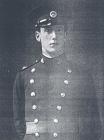THE WELSH AT GALLIPOLI
Items in this story:
2015 is the centenary of the Gallipoli campaign.
Gallipoli is immortalised in the memories of people of Australia and New Zealand whose men formed the famous Australian and New Zealand Army Corps [ANZAC].
At the start of the First World War, Australia and New Zealand were young countries with small populations of 5 million and 1 million each. After suffering casualties of over 11,000 dead and nearly 25,000 wounded, a day of remembrance was instigated as early as 1916. This has ensured that those who lost their lives during the Gallipoli campaign will never be forgotten.
Men from many nations fought alongside the ANZACs at Gallipoli – from France, Newfoundland and India – as well as soldiers from all the home nations.
Like Australia and New Zealand, the population of Wales was small and it is often forgotten that Gallipoli saw some of the blackest days of the entire war for Wales, especially in August when the 53rd [Welsh] Division went into action at Suvla Bay.
By the end of the Gallipoli campaign, over 1,500 men from the South Wales Borderers, the Royal Welsh Fusiliers, the Welsh Horse Yeomanry, the Welch Regiment and many fighting in other regiments had died.
“A good army of 50,000 men and sea power –
that is the end of the Turkish menace.”
Winston Churchill 1915
“One night when I was going to HQ from the
trenches I heard some men in the dark so
pulled out my revolver and waited, when they
came nearer I heard they were our men, two
were helping a man badly shot-through the
thighs. I stopped them to see if I could do
anything – but was unable – the dying man
only said “I have tried to do my duty so nothing
else matters.” The cries of the wounded were
too awful all night.”
Captain Frank Mills, 6th Battalion Royal Welsh Fusiliers



